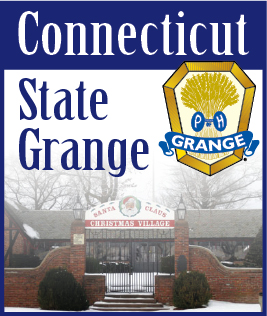| FEBRUARY 9, 2019 --
The following opinion piece appeared in the January 18, 2019 Washington Examiner.
In the 1920s, the United States was being transformed by a new innovation: electricity. Constant access to power was fundamentally changing the way Americans lived and the economy operated. It was not long before electricity was a complete necessity. However, while most of urban America was on the power grid by the late 1920s, much of rural America remained in the dark. By 1930, only 10 percent of our nation’s farms had electricity.
Nearly 100 years later, rural America is living through another technological divide - the rural broadband gap. In today’s modern economy, the ability to get online is as essential as electricity. And while access to broadband-quality internet is nearly ubiquitous in urban centers, rural Americans have once again been left in the dark.
We truly are living through a rural/urban divide that is as consequential as the electricity gap once was. Thankfully, public and private partners alike are stepping up to the plate to bridge it. One government agency working in this area is the Federal Communications Commission.
I applaud the FCC for its leadership on this issue. However, there are several long-overdue, uncontroversial changes the commission could make to advance its mission in an expeditious manner.
First among them is the FCC’s data collection methods. The FCC collects rural broadband data by census block. A survey is sent to local internet service providers asking if they do or could serve one home or business in a given census block. If the answer is yes, everyone in that census block is counted as covered. In rural areas, census blocks often cover large geographical spaces. Just a few miles can mean the difference between having access and being unconnected, and this data collection method results in a much rosier picture than what is actually happening in rural America.
Last week, Microsoft released its own data that showed just how out of sync current FCC figures are with reality. In Ferry County, Washington, for example, the commission’s broadband deployment report says 100 percent of people have access to a broadband service.
However, Microsoft’s data shows that only 22 percent of the population actually accesses the internet at broadband speeds. If every resident had access, it’s hard to believe 97.8 percent of them would choose not to use it.
The FCC needs to overhaul its data collection methods so local providers have reliable information to tell them where coverage gaps exist and where deployment efforts are needed. Ferry County clearly needs help, but you’d never know it by only looking at the FCC’s map.
Second, there is a simple regulatory fix the commission could make to bring broadband to more rural Americans.
When we look at the broadband and electricity gaps, both had a common element: Wired technologies are slow to reach rural areas. Just like power lines, fiber cables are expensive to deploy, and reaching small populations in remote areas is not always economically feasible.
However, wireless technologies cost far less to deploy, and that is why adoption rates of technologies such as radio and cell phone service have historically reached rural America faster than wired technologies such as electricity and cable television.
Right now, a new technology called TV white spaces is allowing providers to wirelessly deliver broadband to rural communities through unused spectrum between broadcast television stations - lowering deployment costs and creating a business case to build rural networks.
Unfortunately, the FCC has left the rules regulating TVWS in draft form for years, creating regulatory uncertainty for innovators who are eager to use the technology to connect rural America.
An overhaul of its data collection method and a removal of the regulatory barriers holding TVWS back would create an immediate opportunity for the FCC to make progress on its goal of bridging the digital divide.
Best of all, these solutions are not controversial. Lawmakers from both sides of the aisle- Sens. Steve Daines, R-Mont., and Ron Johnson, R-Wisc., as well as Rep. Tim Ryan, D-Ohio, have written letters to the commission on these issues. Furthermore, organizations across the political spectrum such as the National “Grange and the National Parent Teacher Association have joined a coalition called Connect Americans Now to advocate in favor of these regulatory fixes. |
